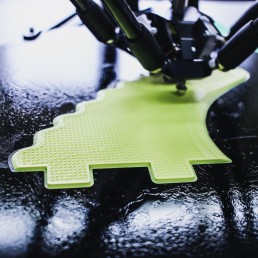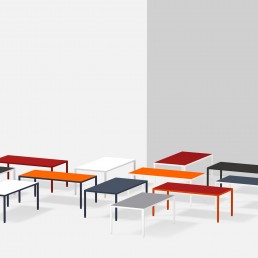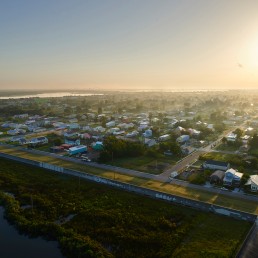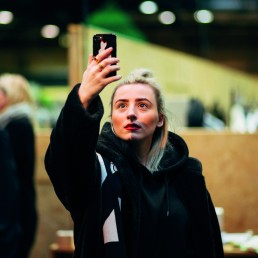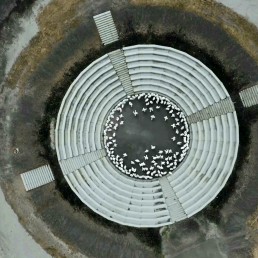
Challenging Design Thinking
Can Focusing on Taboos Help Solve Systemic Problems?
By Susanne Stauch, April 2017, Berlin
Today, we are facing increasingly complex design challenges, along with so-called “wicked problems” (Horst Rittel, 1973), that need to be tackled inter- and trans-disciplinarily, on both a global and local scale.
Questions about the role of design in this societal, ecological, and economical transition are becoming more and more meaningful. Ideally, designers are aware of the immense responsibility they have in terms of influencing change, and clients are well advised to include these unconventional thinkers in their projects from the inception. Design has always been an innovative mindset, questioning the status quo and finding means to improve both functionality and aesthetics in our cultivated environment. Along with this mindset comes a toolkit, which until recently was defined by the label of expertise attached to its design area: product, graphic, interface, web, service, etc. All of these subsets share a creative process based on common sense that is immanent when creating the world around us — starting at understanding the problem, need or message being designed for; going through iterations of questions, variations, prototypes, and tests; and, finally, concluding with the finished design.
Clever marketing strategies have turned this highly variable and intuitive process into a dangerously streamlined recipe for finding success and innovation over a weekend workshop. This might apply in certain contexts, but the overall current praise of using Post-its and brainstorming to reinvent the world is missing the fundamental necessity of finding sustainable and ethical suggestions for a future we all want to live in. This is important especially from the perspective of currentness: the methodology is based on design approaches from the last century, initiated by the design methods movement of the 1970s, which was appropriate in its time but is insufficient to solve today’s problems.
Thus design itself must undergo an extension of its own definition, and subsequently rethink its methodologies, a movement which is in fact happening presently at international design conferences and in the design research arena. To sum up this glimpse into the current state of design and its theory and methodology, the words of sociologist Harald Welzer apply. He says that there are no more experts, because we need to create new knowledge and approaches if we want to solve our problems; yet all we have is the expertise that brought us to the situation in the first place.
How can we generate this new knowledge and understanding? That is where design comes back into play. Good design starts with asking the right questions: painful ones, uncomfortable ones, ones that shed light on dark spots, scrutinize taboos, and go much deeper than so-called “pain points”. This might be intimidating to begin with, but accompanied with the right mindset, answers to such questions can be aesthetically beautiful, empathic, empowering, and ecologically as well as economically sustainable. Observations of different projects and approaches have shown that pointedly tackling inertia and fear leads to deep and meaningful insights, which — processed with embodied cognition — turn into powerful ideas and prototypes. One of the projects is presented in this book (p. 210/211), where the subject of depression and other mental issues was approached by focusing on the inertia and fears of those affected. By building prototypes that make mental issues experienceable in a physical way, a tangible connection was drawn between an abstract and very individual circumstance to something people can discuss and reflect upon through a shared physical experience.
Now, what does this mean for design as a discipline and mindset? First of all, it seems to be necessary to question the aforementioned separation within the discipline into small sectors of expertise. Design has copied this fragmented structure from the sciences in recent decades, as it became increasingly complex with the appearance of ever-emerging new fields. What gets lost with this development is the holistic view and understanding of the system and its interconnected parts; a fact Buckminster Fuller wrote about in his highly recommendable 1968 book “Operating Manual for Spaceship Earth”.
In the meantime, it has been understood that we need to look at complex challenges from a bird’s-eye view to really grasp all the components of a specific problem. However, solving these problems is both a matter of perspective and of the mindset with which those challenges are perceived. Right now, there are several different names for the same evolving movement. “Social innovation”, “transformation design”, and “transition design”, just to name a few. What they share is not only an understanding of the systemic interrelatedness of aspects, stakeholders, and effects in complex problems, but also the demand for literacy in economics, ecology, politics, and cultural and sociological knowledge. These traits are then combined with an empathic and mindful interaction, as well as awareness for responsibility and the need for action. The fruits of this new thinking can be seen in the increase of open and shared information, community projects, local actions, and a rise in cooperation across the board.
As much as the calling to become a designer is based on observational skills, systemic understanding, and talent, these skills can be found in everybody, to a certain extent. This has two consequences: firstly, as an expertise, design should be cultivated, and its university curriculum adapted to the needs of a post-industrial society. Secondly, its derivate “design thinking” should be reclaimed and professionalized to become a high-value skillset for designers to support thriving interdisciplinary teams. At the same time, its multi-faceted foundation — consisting of critical and creative thinking, making and crafting as empowerment tools, as well as empathy and mindfulness — should be integrated in the curriculum of basic education in schools. Then perhaps inertia, fear, or the feeling of being helplessly overwhelmed by catastrophic futures will slowly be replaced by curiosity, creativity, and autonomous responsible action that does not obey questionable or outdated authorities.
Coming back to the headline question: design methods and their constant expansion, as well as a critical, holistic, and objective mindset, offer a high potential to kick off a positive transition to overcome the commodification of life towards more sustainable interactions and ways of living. This can already be seen in countless places and projects. It can increase the understanding of everyone’s responsibility in this process, not only to look at the outside but especially on the inside. A promising approach would seem to be getting to the core of each wicked problem by tackling our own fear and inertia, coupled with problem-solving through embodied cognition. Getting out of our heads and into our hearts and bodies leads to the presumption of having the potential to help us rise to the “other level” of consciousness, rather than the one that created the problems in the first place. ■


